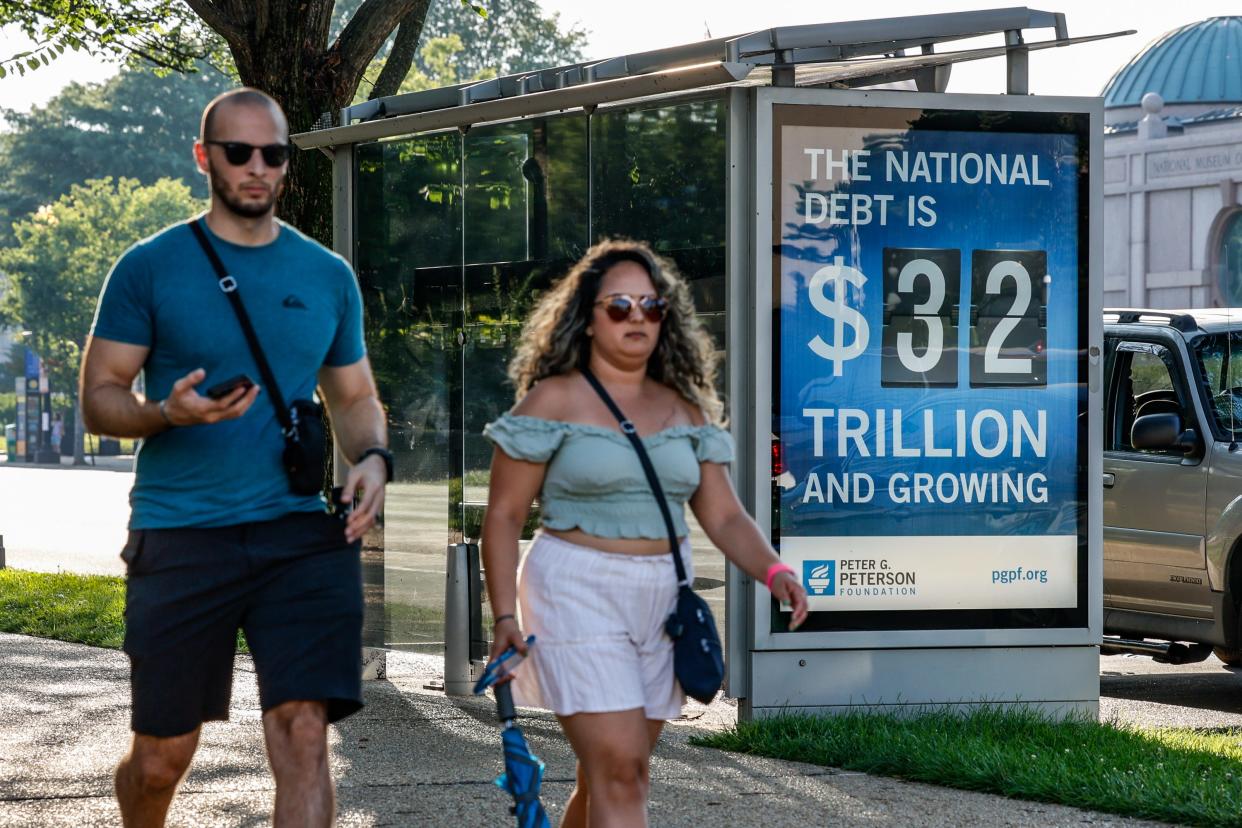Higher interest rates squeeze federal budget | David Moon
The fastest-growing category of U.S. federal government expenditures isn’t national defense, intelligence gathering, Medicare, Social Security, education or immigration related. It is interest on the national debt.
The duel financial cancers of exploding government debt and higher interest rates have almost doubled federal interest costs from 2020 to 2023, from $345 billion to $659 billion. This year, federal interest expense will approach $1 trillion. To put that into perspective, annual interest cost is about equal to what the federal government spends on transportation, housing and food/agriculture – combined. We will spend as much on interest this year as we do on the entire military.
As long as interest rates were near zero, it almost didn’t matter how much money we borrowed – at least not until we had to pay back that debt with newly borrowed money at astronomically higher rates. In 2020, the rate on newly issued three-month Treasury bills was less than 1%. Today, that rate is 5.2%. The rate on 10-year federal debt has increased from one-half percent to more than 4% today.

When I was in college, an economics professor told me that the level of the national debt was irrelevant, because the government could always borrow whatever it needed to pay off existing debt when it came due. That’s true, at least until it isn’t. And if you don’t mind crowding out other government expenditures with increased interest expense. That professor, however, said that increased debt service costs could always be funded with modest tax increases.
Wrong.
Interest on the national debt consumes 25% of all personal income tax revenue the federal government collects. There is no feasible way to instantly – or even gradually – increase taxes enough to fully cover even the interest on our national debt. Just as a morbidly obese person can reach an ideal weight by cutting calories, our federal government has reached a state of fiscal excess that can be corrected only by a reduction in spending. We can’t tax our way to fiscal responsibility any more than a 600-pound man can exercise his way to 200 pounds.
In the almost 40 years from 1983 until 2021, interest rates in the U.S. steadily declined. It’s easy to borrow as much money as you want when the interest costs are declining to the point of becoming practically negligible. (Almost zero percent in 2020.) Within the next year, more than $7 trillion of debt will come due and require refinancing ‒ as well as another $1.7 trillion of new deficits. Combined, that’s 25% of our existing national debt, all of which will be borrowed at significantly higher rates, consuming an even larger percentage of total government expenditures.
David Moon, president of Moon Capital Management, may be reached at david@mooncap.com.
This article originally appeared on Knoxville News Sentinel: David Moon: Higher interest rates squeeze federal budget
